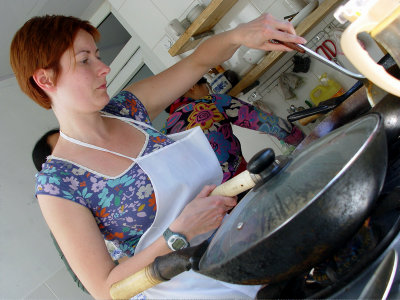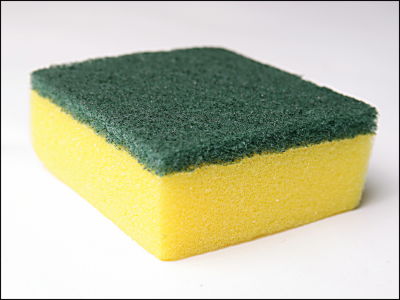The tableware sponge has become colonies of bacteria, the boiling treatment is meaningless, when visualizing the breeding of bacteria it looks like this

ByKaren
Washing dishes In the kitchen sponge, bacteria are easy to grow, so it is often taken to disinfect by heating with a microwave oven or hot water. However, in the latest research, neither sponges that had been sterilized by heating nor sponges that do not have a slight difference in the degree of propagation of the fungus, the tendency that bacteria that are related to diseases tend to be higher in the disinfected sponges It was announced there was.
Microbiome analysis and confocal microscopy of used kitchen sponges reveal massive colonization by Acinetobacter, Moraxella and Chryseobacterium species | Scientific Reports
https://www.nature.com/articles/s41598-017-06055-9#MOESM2
Kitchen sponges are festering germ dens-and sanitizing them does not help | Ars Technica
https://arstechnica.com/science/2017/07/kitchen-sponges-are-festering-germ-dens-and-sanitizing-them-doesnt-help/
The research was conducted by Professor Marx Egart, researcher at Furtwangen University in Germany. The researcher team gathered 14 dishwashing sponges actually used in German general households,DNA sequencingWe got genetic material to do and examined what kind of bacteria are present in the sponge. And at the time of the survey, it marked bacteria in active state and breeding, and made it visible by 3D laser scanning microscope.
This is a sample of sponge.

As a result of DNA sequencing, bacteria of nine, seventeenth, thirty, seventy-third, 118 genus were discovered. As for the breakdown of bacteria, the bacteria of Moraxellae family were the most frequent, accounting for 36% of the whole sample. Bacteria of Moraxellae family are found in human skin and can be found everywhere in the kitchen, such as kitchen counter and fridge that are often cleaned with sponge, faucet, stove. It also adheres to clothes, so you can also find it well from a washing machine.
others,ProteobacteriaYaBacteroides gate,ActinomyceteThe researchers have reported that they are also found. In addition, five of the top 10 bacteria that occupy sponges are said to be bacteria related to disease.
It is like this when showing the location of the bacteria in the sponge in 3D model. A light blue part is a sponge, in a part with a purple pointGamma proteobacterium classExist.

According to researchers, the number of bacterial cells present per cubic centimeter of sponge is about 25 billion to 54 billion.

Some of the owners of the sponge sterilized the sponge periodically, such as "hanging on a microwave", "attaching to hot water", etc. However, those sponge and other people's sponge There was no change in the number of fungi, and even more of the bacteria related to the disease was even more. Researchers said that this trend "probably resistant bacteria that survived the sterilization process will soon begin to make colonies and will be in the same state as before the sterilization process begins," sterilizing The more you process it, the more rapid bacteria are noted to increase rapidly.
"In the long term, attempts to keep the sponge hygienically may not increase the bacterial effect, but may increase the proportion of bacteria related to the disease.Therefore, We support the exchange of kitchen sponges regularly on a weekly basis, "researchers are calling on to recognize that the dish sponge is functioning as a fungus incubator I will.

ByJens unglaube
Related Posts:
in Science, Posted by darkhorse_log







